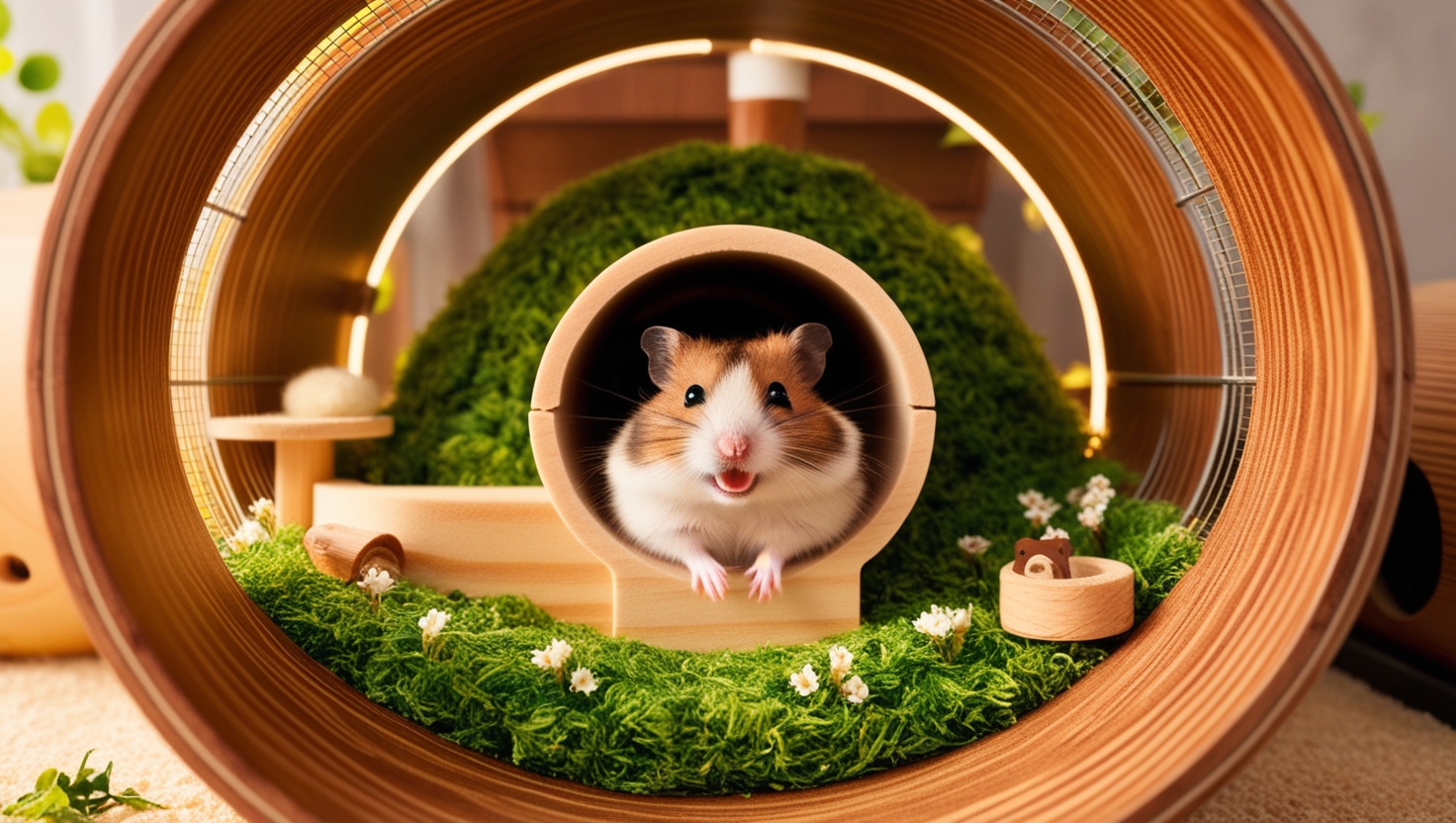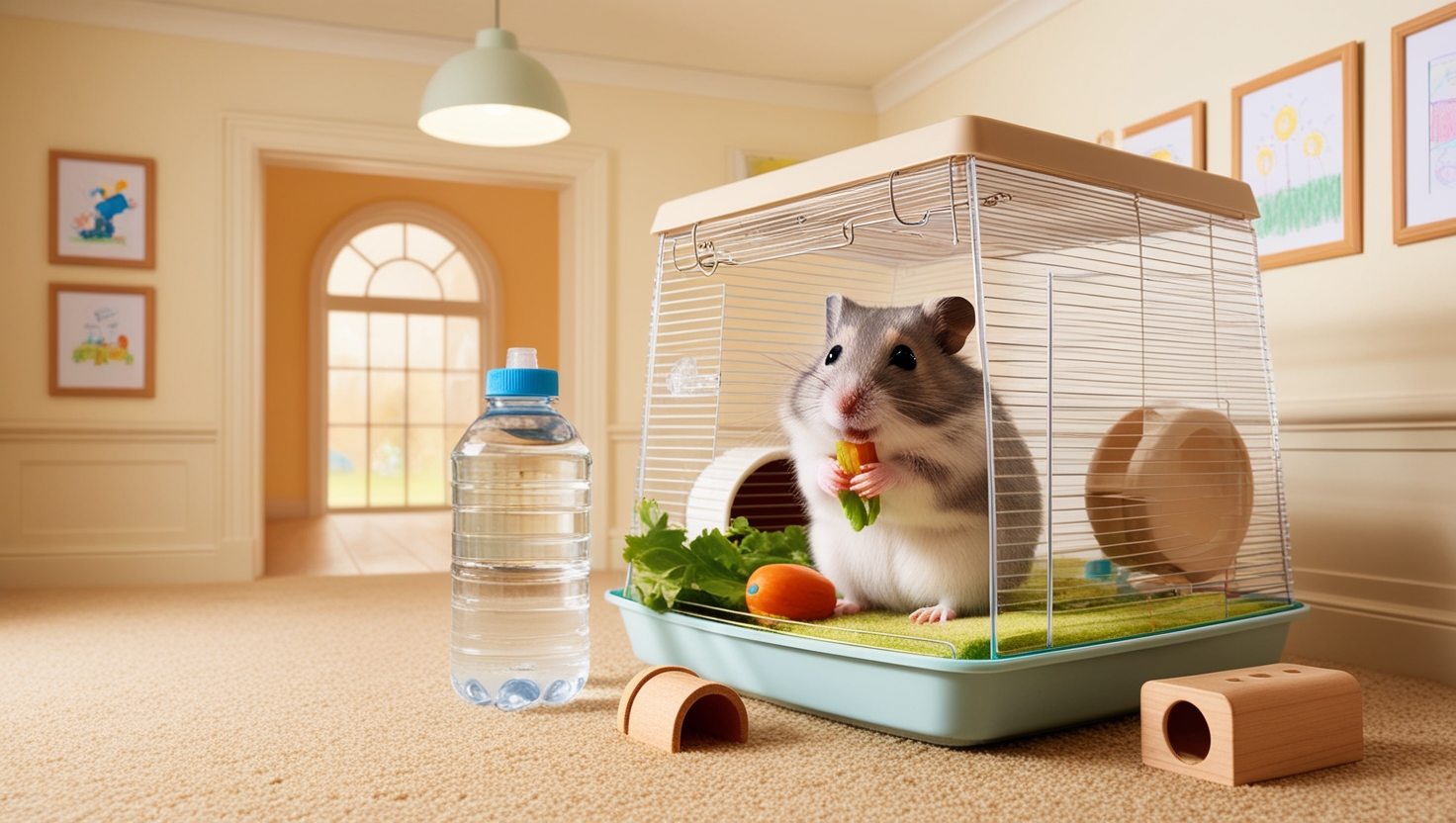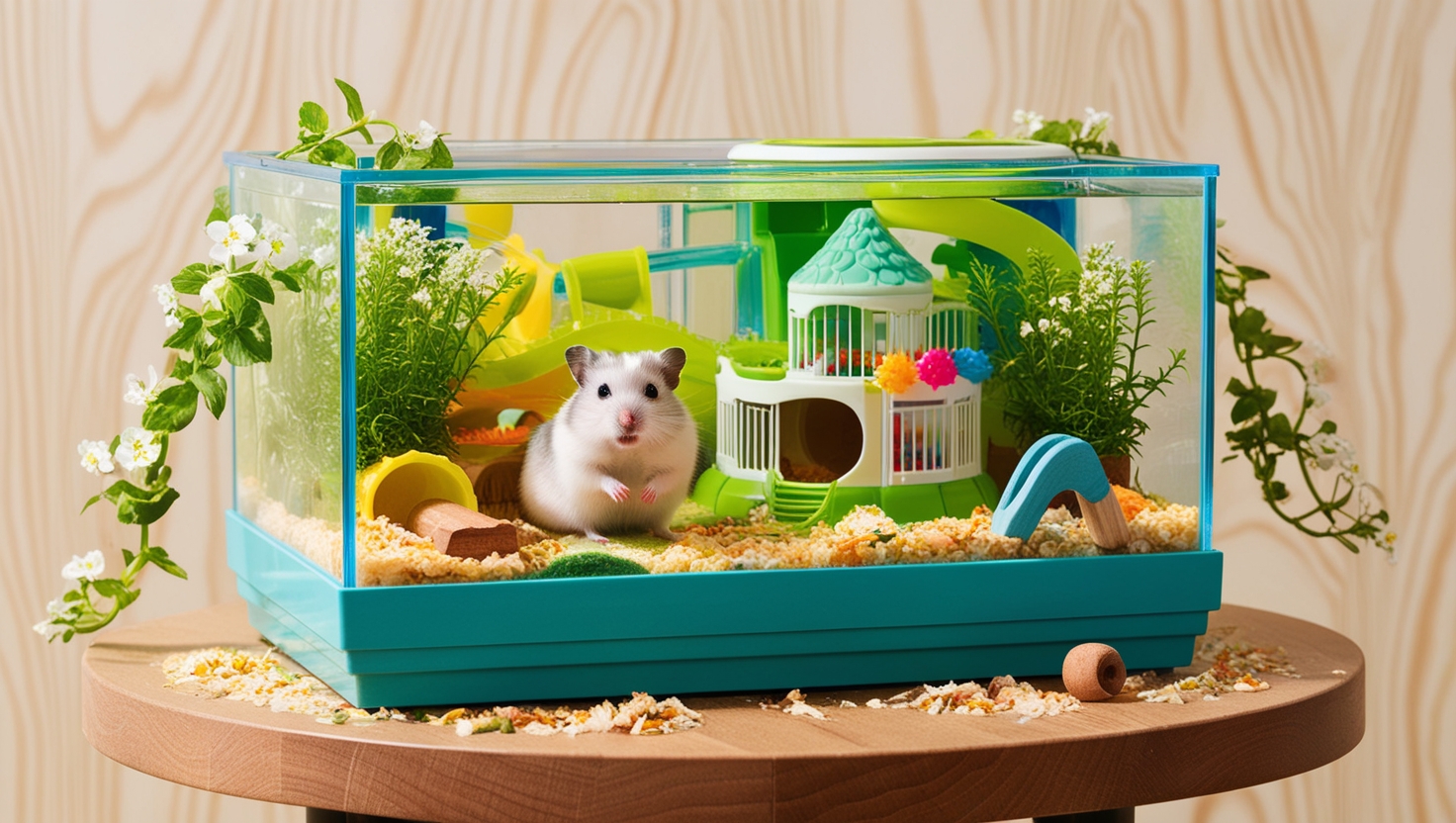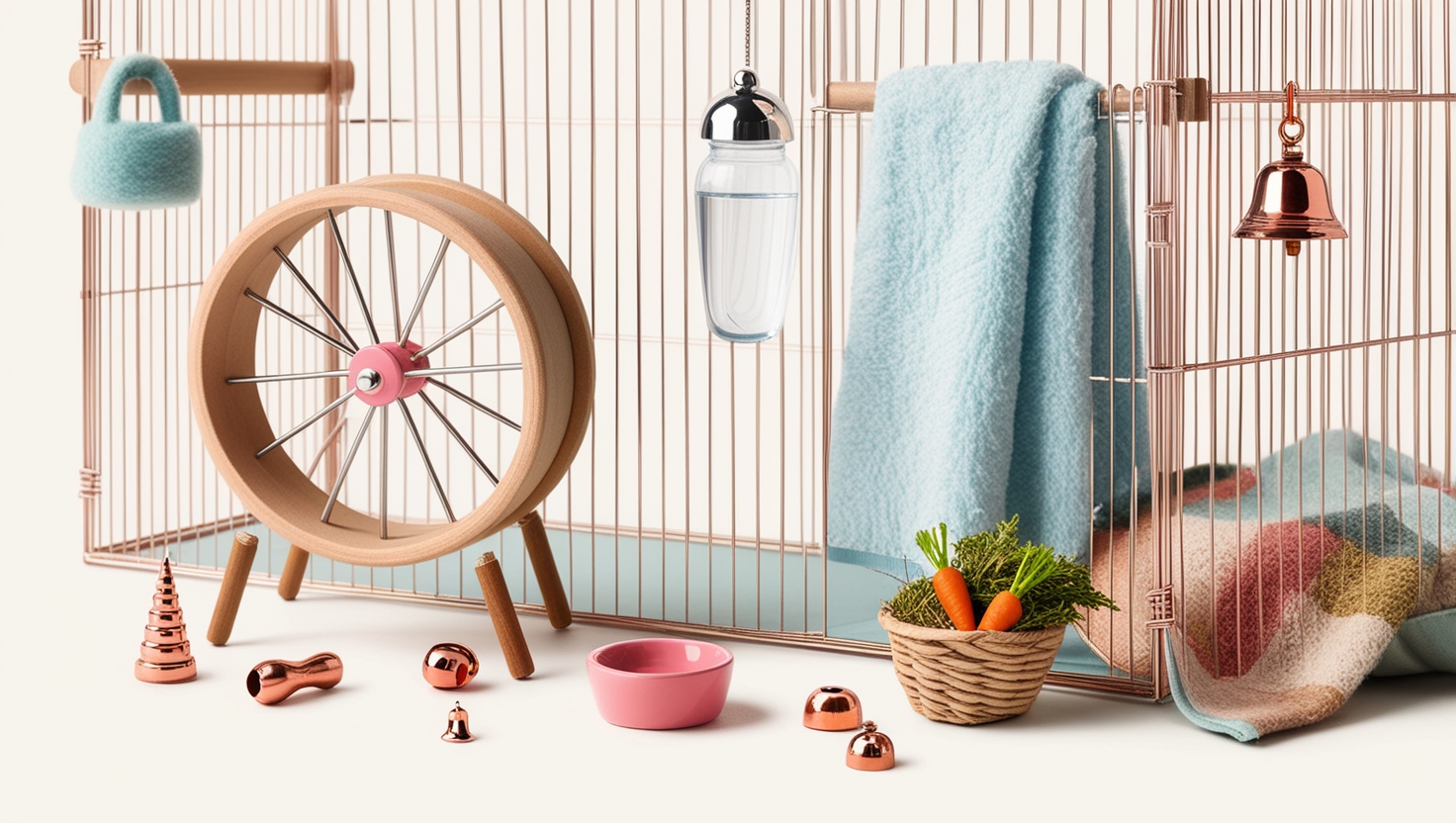If you pick a hamster cage made of plastic and wire it will usually have a colorful plastic top, wire bars in the middle, and a plastic base on the bottom. When you are choosing this type of cage you should think about size, set up, color, parts, and cost.
Size
Generally the plastic and wire combination cage is a little smaller than a plain wire cage. Many of these type hamster habitats are usually under 2 feet in length. Some of these cages allow you to make them bigger because they have holes on the top or the side. These holes let you connect hamster tubes that can expand the cage. You can add a lot of tubes or you can bring the tubes to second cage so your hamster can run between the cages.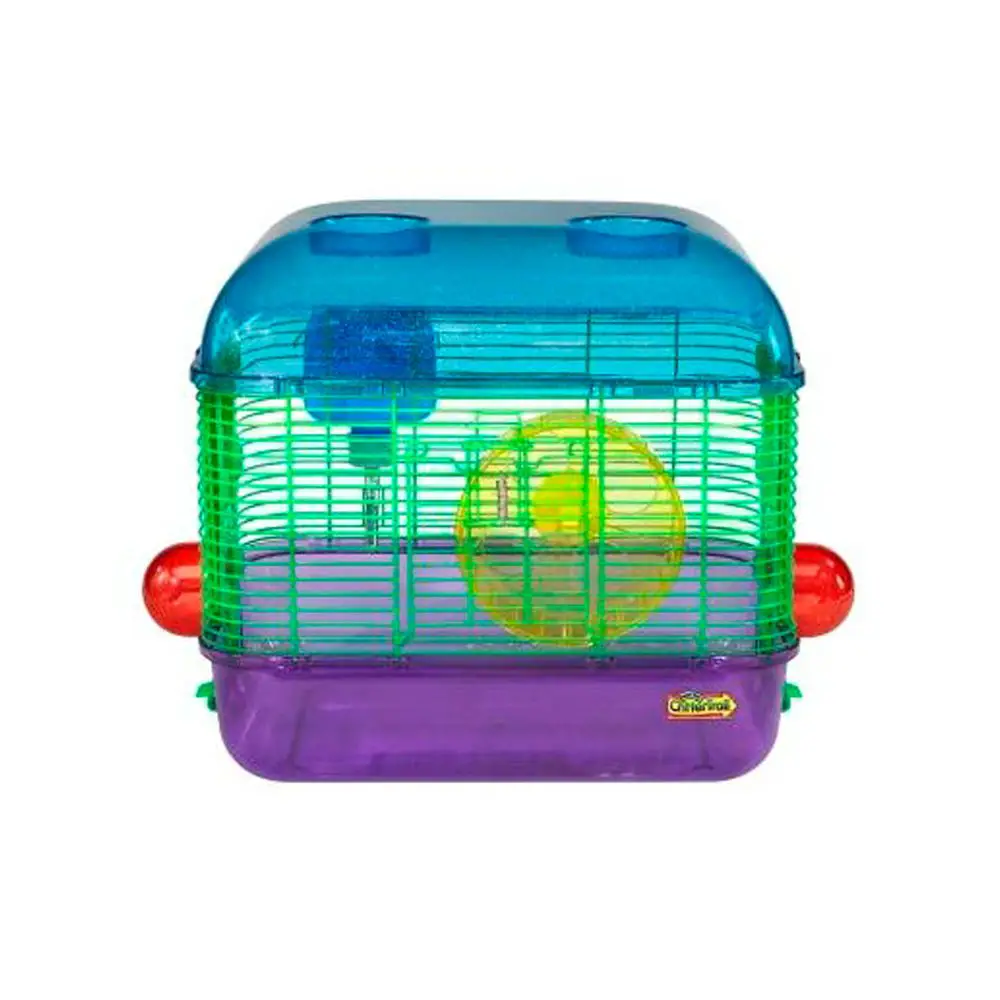
Some of these cages also let you add a second story so your hamster has an extra floor in the cage to play on.
If you’re keeping a couple of dwarf hamsters, this type cage might be good for you. But if you have one large Teddy Bear or Syrian hamster, look it over carefully to be sure he or she is going to have enough room to move around.
As with all hamster cages, you need to be sure the wire bars are close enough to keep a dwarf hamster, such as such as a Roborovski, from escaping through the bars.
Set up
These cages usually come in a box with a lot of pieces that have to be put together. So setting up this type of cage means snapping the wire parts into the plastic base, putting the plastic parts in the cage, then attaching the top and any other plastic pieces that attach to the sides or the top. This can be a big job and smaller kids may need help.
People disagree on how easy or hard it is to put these cages together. Some people find it easy to get together while others think they are very difficult.
One problem is the plastic used for the tubing on the tops of this cage. If the plastic is thin or flimsy and you push things too hard when putting the cage together, the plastic can break. You have to be especially careful when you’re squeezing plastic climbing tubes into their holes.
One of the additional problems is that the instructions that come with these cages are often not too good. So you have to try and put the cage together by looking at the picture on the box.
One good piece of advice is to put the cage together before you buy your new hamster. That way you have plenty of time and don’t have to worry about your hamster being stuck inside an exercise ball.
Color
Although these cages are colorful to look at, keep in mind that hamsters are colorblind so they can’t see the colors. They can, however, see light and dark. So the lighter color plastic will be easier for them to see through while it will be harder for them to see through the darker colors. It will also be easier for you to see your hamster inside the cage if you get a lighter color plastic. But, to tell the truth, you don’t get to choose the colors you want for most of these cages.
Pieces and parts
Combination plastic and metal cages usually come in kits that have a lot of pieces. Because hamsters are all different, not all the pieces will be the right sizes for all hamsters. Sometimes the exercise wheels are too small for Syrian hamsters. Sometimes the water bottles leak or don’t fit well inside the cage. Sometimes the food bowls can be too tiny for all the different kinds of food you want to give your hamster.
So even if you think you’re saving money by buying a kit with all the parts, you may find you still have to buy a separate exercise wheel or a separate water bottle to fit inside these cages. These will cost extra.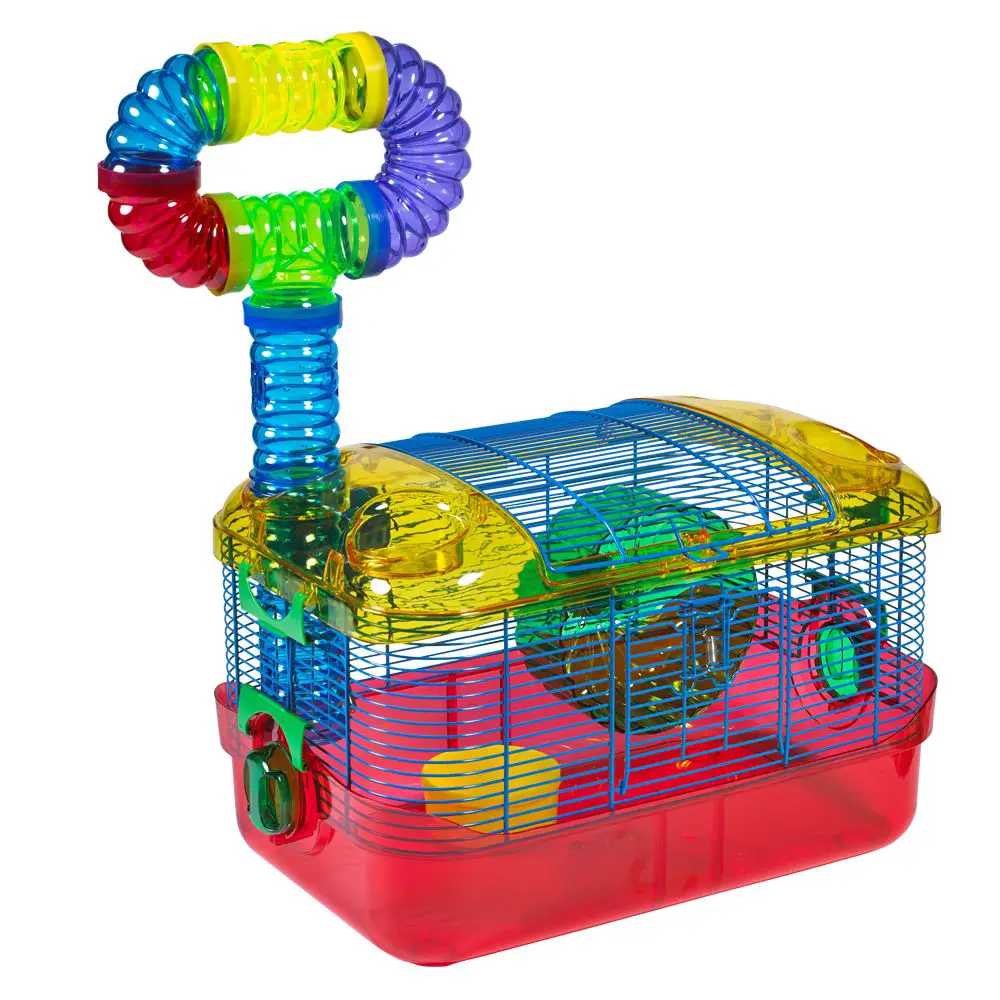
You also want to be sure that hamster tubes that are part of this cage are big enough for your regular size hamster, like a Teddy Bear, to get through. You don’t want your hamster getting stuck in the tubes. If you have dwarf hamsters, you also want to be sure the hamsters have something to grab on to so they can climb through the tubes. If the tubes are smooth you may want to put a thin branch inside the tube so your hamster can more easily climb through it.
Cost
These cages vary in cost depending on size. The taller combination cages – like three stories – usually cost around $50 and up. Medium-size cages that are one and two-stories often cost from about $25-$40. Smaller, starter cages can be found for about $25-$35. There are a few very small combination cages available for under $20. To see different cages and their costs go to the hamster cages and accessories page.



